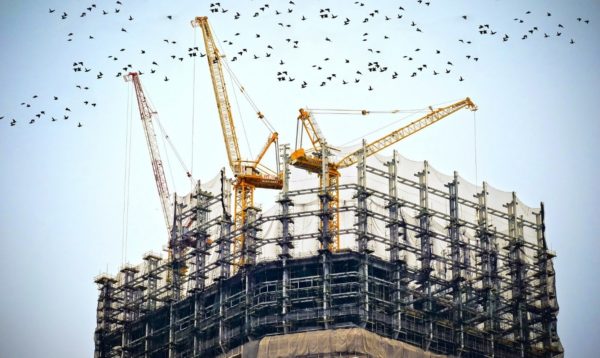
Most businesses must have a proper code of conduct and safety protocols at the working site. Be it a production facility, manufacturing plant, or a construction site; the rules are equal for every business owner. But in the case of a construction site, stringency and preparedness are essential.
The employers are solely responsible for ensuring construction site staff safety since the accidents can be life-threatening if the employees do not adhere to the rules. The company has to provide health and safety facilities. These facilities may differ according to the industry, but they are mandatory in any case.
So whenever a construction project starts, you as an employer or manager have to ensure site safety. It is essential because construction sites are prone to dangerous situations that can be life-threatening at times. Constriction workers risk their safety to do the job, so it is your responsibility as an employer to provide all the safety measures that can keep the workers safe.
By arranging for construction site safety measures, you are saving your workers and the public. Most of the time, the construction site is near downtown with a heavy public flow. Lack of safety can put the life of the passerby in danger. Suppose any bystander or passerby gets injured due to a lack of safety measures on your part. In that case, it can result in a lawsuit. That lawsuit has the potential to put a heavy financial strain on the company.
To avoid any unpleasant mishaps, the following are seven safety practices for your construction site:
- Install Signs
All Safe Work Method Statement (SWMS) notices should be displayed inside the construction site for everyone to see clearly. That way, everyone can be aware of the safety protocols of a safe construction site. These protocols should include emergency numbers and maps for a more straightforward direction. Moreover, signs that indicate the amenities, entry points, exit points, first aid, and fire equipment at the site should be visible.
When it comes to the general public, ensure that you install signs that dictate work in progress ahead. These signs will warn the commuters to be extra careful when crossing the route or avoid it entirely. Install ADA signs with braille indentations so that the disabled can know about the construction work ahead. It is imperative because the disabled are at a higher risk of meeting a construction site accident. They may not get the necessary warning signs or cry out for help if there is no one around.
- Emergency Preparedness
Every worker on the site should have mandatory safety training once or twice a year. No matter how experienced the worker is, they should know how to deal with the updated safety measures. These training sessions can alert the workers about high-risk areas and give them necessary instructions to work in that area and remaining safe. These sessions teach the workers about emergency management and preparedness.
- Security Checks
Construction work is risky work in general. But an employer can take necessary steps to minimize the risk factors. If the employer conducts regular checks regarding safety and holds everyone present at the site responsible for their actions, they can reduce workplace risk. To manage the risks, you can design procedures for dealing with emergencies. These procedures can also involve the necessary steps to take if the workers want to report something. The report can be about a workplace injury, safety hazard, or malfunctions. Acting on such statements can minimize health risks.
- Implement Safty Rules
That includes the management of the workers to ensure the implementation of necessary safety protocols. Workers are less likely to leave tools and equipment lying around the site haphazardly if security keeps a strict check on them. So upgrading your site security can work in your favor and reduce safety risks.
- Compliant Chemical Storage
Make sure to store away all the hazardous chemical materials after each usage. Chemicals are one of the most significant high-risk factors on a construction site. Mishandling them can result in fires, chemical injuries, explosions, worksite contamination, or asphyxiation. Take all necessary measures to reduce any spillage and ensure safe use. Provide all workers with essential work gear that is appropriate to handle chemicals. Once used, have a firm safety protocol for chemical storage and discard.
- Take Environmental Factor Into Account
Environmental conditions such as rain or a storm can hinder the construction work. So it would help if you had clear guidelines about the working condition in such a situation. The on-site emergency plans should have a clear-cut plan about what the workers should do in a natural disaster. These guidelines should also indicate what to do in case of severe environmental conditions.
Another environmental factor is the impact of the construction site on the area around it. The loud noises and dust clouds are a considerable health risk for the construction workers and people around the room. Take measures to reduce the health risks produced as a result of construction.
- Provide Protective Gear
Everyone on the construction site should wear protective gear. Such equipment includes a vest, helmets, safety goggles, harnesses, gloves, and boots. You should provide the protective gear according to the project’s intensity and the worker’s role on the site. To ensure the workers’ safety, you can set fines for not wearing the necessary protective gear on site. But also reward those who show responsibility and wear protective equipment at all times on the construction site. Promoting this behavior will minimize the chances of injuries or fatality.
Conclusion
The safety of the construction site is not the responsibility of the higher management alone. Each person present at the site is responsible for their safety and the safety of others. So there is no room to take construction site safety matters lightly. The safety process is an ongoing process that demands the right precautionary measures and safety plans at all times. Using the above-stated methods, you can improve construction site security and safety. After all, human safety comes first.



